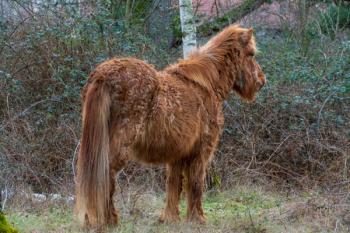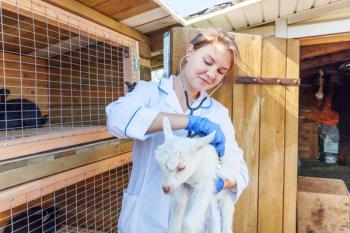
New emerging diseases in U.S. only a matter of time, expert says
African Horse Sickness, Hendra and Glanders are diseases Dr. Corrie Brown hopes to avoid in her lifetime.
African Horse Sickness, Hendra and Glanders are diseases Dr. Corrie Brown hopes to avoid in her lifetime.
Although none of the diseases has crossed U.S. borders, each remainsa plausible emerging disease threat.
"They're diseases you hope you never see, but if you do, you darnwell better be able to diagnose them. The most worrisome disease is theone that enters next," says Brown, a professor at the University ofGeorgia.
Let West Nile Virus be a reminder. Prior to 1999, the virus wasn't onthis country's radar screen. "Who would've expected West Nile to spreadthe way it did? West Nile was very, very low on the list of possible introductions.
"The amount of damage we will suffer from an introduced diseaseis directly related to how quickly we recognize it and are able to eradicateit," says Brown.
Brown gave a presentation, "Foreign Animal Diseases with EquinePotential," at the most recent American Association of Equine Practitionersconvention in Orlando. She highlighted viable disease occurrences and protectivemeasures equine practitioners can take.
Potential threats include:
* African Horse Sickness
African Horse Sickness (AHS) virus, an orbivirus, topped her list. Rootedin Africa but known to make incursions in new areas, the acute systemicillness, transmitted through Culicoides insects, primarily affects horses.Mortality rate is 70 to 95 percent. Clinical signs include respiratory distress,edema, colic and hydropericardium hemorrhage.
AHS-infected insects could easily arrive within the states, says Brown,due to high rates of international travel. As a precaution, Brown recommendsvaccination as well as eliminating all Culicoides insects.
Awareness of such diseases alone goes a long way toward prevention, addsBrown.
"If African Horse Sickness, for example, is introduced into theU.S. and no one is thinking about African Horse Sickness, then it's notgoing to get diagnosed. It's going to spread, and we're going to have aheck of a time getting rid of it. Whereas, if we're already thinking aboutit, then we're going to diagnose the first case, then get rid of it andit won't get established in the insect population."
* Glanders
This historical contagious disease was initially developed as a bioweaponduring World War I to infect horses of enemy troops. Eradicated from theU.S. in 1937, the disease, caused by the bacteria Burkholderia mallei, iscurrently restricted to Asia and Eastern Europe.
Animals present with fever and then signs referable to point of entry.In non-endemic areas, the disease can be mistaken for strangles, rhodococcalpneumonia or ulcerative lymphangitis.
No treatment is recommended for the disease.
* Hendra
A new paramyxovirus that emerged in Australia in 1994, Hendra is spreadby the fruit bat. The disease presents similar in horses, cats and guineapigs, although its primary targets are humans and horses. Clinical signscan resemble pneumonia. Probability of U.S. entry is minimal, reports Brown.That said, she notes that researchers know less than 10 percent of all bacteriaand viruses present in all animal species. Normal flora in one species whentransmitted to another may cause an emerging disease.
* Trypansomal diseases
Dourine is a fatal equine venereal disease present worldwide that causesswelling of external genitalia. It was eradicated from the United Statesin 1949. The clinical disease invades mucous membranes, migrates to thereproductive tract and causes vaginal discharge, abortion and skin plaques.Treatment is not usually undertaken.
* Surra
Transmitted by tabanid flies, the disease affects equine, cattle, buffaloand camels in Asia, Africa and South America.
African animal trypanosomiasis, or Nagana, causes anemia, edema and feverand is transmitted by the Tsetse fly.
* Venezuelan equine encephalitis
Of Eastern, Western and Venezuelan equine encephalitis, only VEE is aforeign animal disease. Although it last appeared in the United States in1971, it recently cropped up in northern South America and Mexico, worryingscientists. The disease presents with neurological dysfunction. Vaccinesare available.
A different world
The catchphrase "globalization" has secured its place in theworld arena of foreign animal diseases, and America can't afford to be astranger to it.
"Over the last 20 years, the world has become globalized,"Brown says. "There's a tremendous amount of trade and traffic. Thepossibilities for introduction of foreign animal diseases now it'snot a matter of if, it's a matter of when."
She adds, "There are two ways a veterinarian can become 'famous'when a foreign animal disease enters the neighborhood. One way is to diagnoseit; the other way is to miss it."
Newsletter
From exam room tips to practice management insights, get trusted veterinary news delivered straight to your inbox—subscribe to dvm360.




